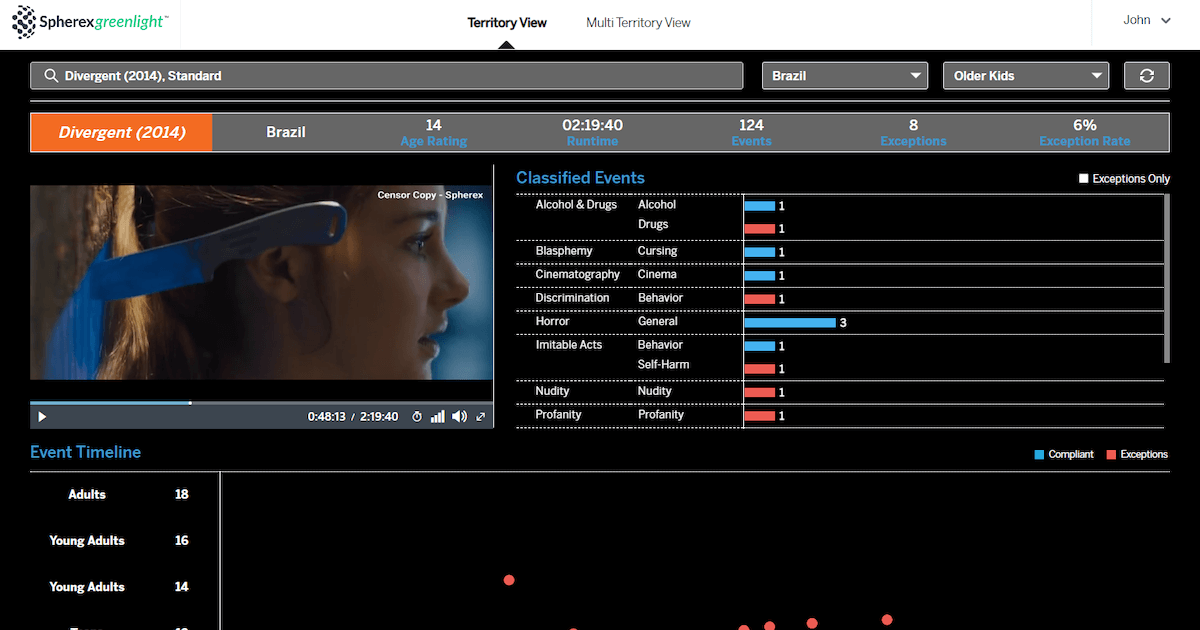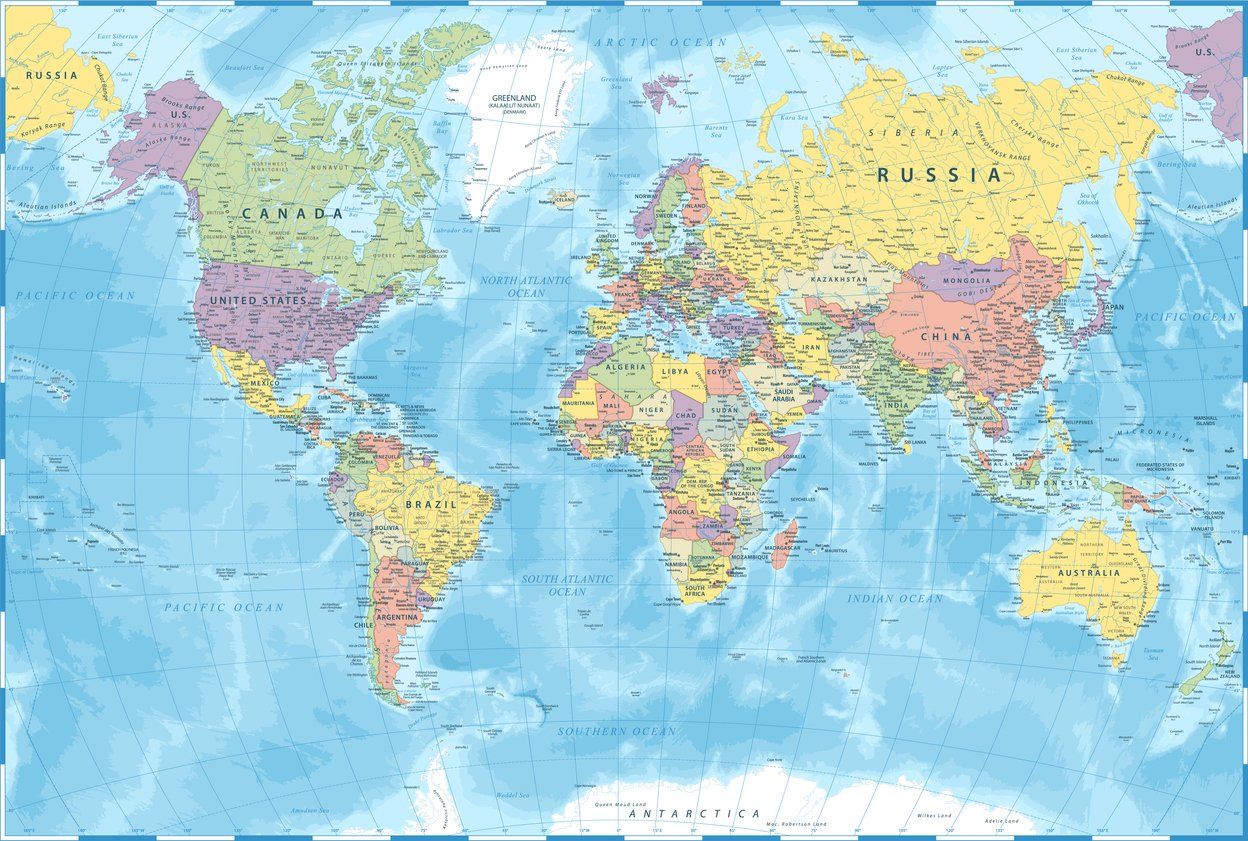Get in touch
555-555-5555
mymail@mailservice.com
Regulation

By Spherex
•
10 May, 2023
Due to government-mandated regulations, exporting content to international markets poses a significant challenge for many in the Media and Entertainment (M&E) industry. These regulations can take different forms and are intended to guide the public on the age appropriateness of film or TV titles. From a creator and distributor perspective, keeping up with the changes and understanding their rationale requires skills and knowledge outside their core competency. Non-compliance can result in financial penalties and is complicated because regulations are subject to change, and no two countries implement rules similarly. This post explores three types of changing regulations globally: local content requirements, prohibitions on Diversity, Equity, and Inclusion (DEI) content, and revised age-rating criteria. Local Content Requirements As the streaming industry continues to grow, platforms are investing billions of dollars in attempts to produce original content. Stories that resonate with audiences are more likely to attract their attention. Regulators have noticed and are implementing new regulations to secure their share of the economic benefits and require investment in local productions. Local content requirements exist in many countries, including Canada, France, Denmark, Australia, and India. Canada recently passed Bill C-11 , " the Online Streaming Act ," which brings streaming platforms under the Canadian Radio-television and Telecommunications Commission (CRTC) regulatory authority for the first time. The CRTC now requires content creators to prove that each piece of content meets Canadian standards, and streaming platforms ensure search algorithms prioritize Canadian content. Fines can be imposed for non-compliance. Diversity, Equity, and Inclusion Despite the M&E industry's support for DEI, many governments worldwide have continued restricting or prohibiting content depicting LGBTQ characters or storylines in film or TV shows. Successful films with diverse stories or leads, such as " Black Panther: Wakanda Forever " and " Strange World ," have been banned or require higher age ratings in countries such as Russia, Saudi Arabia, Singapore, Iran, and the UAE. Although recent studies indicate gains in Hollywood, others show DEI improvements in British Columbia and European productions have been slow to take hold. In the U.S., some states, including Florida and Texas, have passed laws that limit how LGBTQ+ or race-related issues can be shown or discussed in educational institutions or venues. This includes prohibitions on public access to books, videos, or films mentioning aspects of LGBTQ+ life and the performance of plays or movies with diverse stories or leads. Age-Rating Regulatory Changes Content classification regulations are being revised in countries worldwide to expand the number of age groups they consider and to ensure content is more appropriately classified in order to meet the country's cultural and legal requirements. Vietnam's Ministry of Culture, Sports and Tourism (MCST) announced it added two new age groups to the existing four: P (all ages), 13+, 16+, and 18+. The new categories are "K" for viewers under 13 and "C," indicating a film cannot be distributed. More specific classification criteria will accompany the new age groups on topics or content such as violence, nudity and sex, drug use, horror, offensive language, and dangerous imitable behavior. The rating criteria for nudity and sex have expanded to consider the age of the characters and their possible impact on the viewer. In addition to the classification changes, all titles, except films rated "P," must now prominently display the classification level " during the dissemination process ," which means trailers, ads, posters, etc. The content shown on TV or streamed must now exhibit the classification label within three seconds of airing and then three times over the course of the showing if the title is longer than 20 minutes long. The new regulations are available here . India's Union Cabinet has announced it will begin amending the 1952 Cinematograph Act to add three new sub-categories to the existing "UA" rating. The new sub-categories UA 7+, UA 13+, and UA 16+ provide more details to parents or guardians and take Indian culture and norms into account. The "UA" classification is analogous to the "Parental Guidance" or PG rating in the U.S. and provides guidance on whether a film is inappropriate for children under 12. The IT Rules of 2021 already require streaming services to use these age classifications with content descriptors, and the amendment would bring cinema ratings on par with streaming. The Importance of Staying Current Navigating the regulatory landscape is challenging for content creators, who must stay informed and adapt to changing regulations to succeed in global markets. Failing to comply with country regulations and policy changes can delay a title's release, increase post-production costs, adversely impact market acceptance and revenue, and damage a brand. Few content companies have the expertise or capacity to stay current on all changes affecting global M&E markets, but Spherex has you covered. Subscribe to World M&E News to have the latest international regulatory news delivered directly to your inbox. If you have content you want to distribute globally, Spherex ratings ™ and Spherex greenlight ™ are the best tools available to prepare your titles to ensure audience acceptance and reduce brand risk. Contact Spherex today to learn more.

By Spherex
•
14 Mar, 2023
The Media and Entertainment (M&E) industry is complex, and many factors can impact content's ability to find an audience. Writing and producing an engaging story are only two elements of a profitable title release. Here are four more factors that affect the worldwide success of a title. 1. Competition and fragmentation: With more OTT video services entering the market and competing for subscribers, consumers have more choices and opportunities for confusion. Streaming services offer original content exclusively on their platforms or license it to competitors to increase market share. Sometimes they do both, leading to content fragmentation and consumer confusion. This is evident in the current dispute between Warner Brothers Discovery and Paramount Global over licensing the animated series "South Park," which is available on both HBOMax and Paramount+. Not only can fragmentation negatively impact platform revenues, but it also risks reducing consumer satisfaction and increasing churn rates. 2. Regulation and compliance: Video content crossing borders is subject to different legal and cultural norms. Providers must comply with various regulations regarding data privacy, content licensing, taxation, censorship, and consumer protection. For example, the implementation of new privacy laws in several states, such as Virginia, California, Colorado, Connecticut, and Utah, grants consumers more rights and control over their data and requires video content providers to comply with strict rules on data collection, processing, sharing, and security. The enforcement of existing online platform regulations, such as Section 230 of the Communications Decency Act, which protects them from liability for user-generated content, encounters challenges and criticisms from lawmakers and advocates who want to hold platforms more accountable for harmful or illegal content. Emerging technologies and trends likely pose additional regulatory challenges or opportunities. Creators can protect their rights and interests by observing how these regulations are discussed or implemented. 3. Quality and cost: As consumer expectations for video quality increase, so do the challenges of delivering high-caliber content via different networks and devices. Who hasn’t switched channels because the title they’re watching isn't sharp and clear? Resolution matters. Video content providers should invest in technology and infrastructure supporting 4K, HDR, VR, and other formats while managing bandwidth costs and latency issues. Balancing the cost and quality of producing video content that works on any device, such as special effects, animation, or live-action, can be a challenge, especially for productions with limited budgets. Faced with trade-offs between additional spending to create high-quality content or reducing production costs, creators may be required to make changes or edits to obtain approval for releasing their content internationally. 4. Innovation and engagement: As video content evolves with new technologies such as AI, AR/VR, blockchain, interactivity, and filters, providers must keep pace with changing consumer preferences and behaviors. Consumers have demonstrated a willingness to try new ways of engaging with content, and it will become crucial for creators and platforms to innovate or risk falling behind. The challenge is offering technologies ready for mass consumption yet not posing a risk to the content or the brand. For example, some streaming services allow viewers to interact directly with content and influence storylines. For several years, Netflix has provided interactive shows with mixed market results, but development continues. TikTok recently announced an AI-powered "beauty filter" called "Bold Glamour," which changes people's appearance in real-time, raising ethical and social concerns, even among the creative community . This filter is not unlike the services offered by Flawless , which uses facial recognition to create AI-generated, lip-synced visual dubs in videos. Flawless also raises similar security concerns . Good stories are the heart of media and entertainment, and they rightfully deserve much care, attention, and professionalism. But other factors that can and do contribute to market success are often overlooked or downplayed. The coming months and years will tell which methods and tools help introduce stories to more extensive and diverse markets. Many strategies attract viewers, but care must be taken to ensure that the benefits outweigh the risks. Sometimes discretion is the better part of valor.

By Spherex
•
23 Feb, 2023
The French writer Jean-Baptiste Alphonse Karr wrote in 1849 , "the more things change, the more they stay the same." Writing about the social changes occurring in France at the time, his point was that nothing changes without a fundamental shift in knowledge and thinking. Here at Spherex, we closely monitor changes in new legislation, policies, or public sentiment in countries worldwide because it directly impacts a title's age rating , the potential for censorship or unfavorable press, and revenue opportunities. Awareness is the first step in avoiding legal or brand exposure. Since we last wrote on this subject six months ago , some changes have occurred, but much remains the same. Here are recent examples of what we mean. The More Things Change – Malaysia Malaysia's Film Censorship Board (LPF) announced new film and online content ratings in January 2023 that took effect on 1 February 2023. The ratings established five classifications, an addition of two from the previous three: 1. "U" for viewers of all ages 2. "P12" for viewers under 12 years old that required parental guidance (new) 3. "13" for audiences 13 years and older 4. "16" for viewers 16 years and older (new) 5. "18" for viewers 18 and above The changes were a response to content creators expressing that the previous classification system made it impossible to include some scenes without compromising the story. Time will tell how the new system will affect the LPF's view of titles similar to those previously banned , e.g., "Thor: Love and Thunder" and "Lightyear." The first test may be the upcoming Malaysian film " Pulau ," which critics say contains many indecent scenes unsuitable for public viewing . The objectionable scenes include "sexualized kissing" and women wearing bikinis. Some Malaysian officials have already called for it to be banned . The film is scheduled for release next month. The More They Stay the Same – Jordan Netflix, which continues to invest in international content creation, must find a way for local stories to gain global appeal . The company's most-watched title for the past month in Jordan is " Al Hara (The Alleys)." As a locally produced title, the film, while popular with audiences, has been subjected to condemnation by members of the Jordanian Parliament for the inclusion of offensive words and profanity, despite having been approved by Jordan's Royal Film Commission (RFC). The Jordanian Media Authority removed all profanity and scenes that deviated from the values of Jordanian society from the movie before its theatrical release. Netflix’s version restored those scenes, which is the source of controversy. Things Really Don't Change at All – United States From religious beliefs to local traditions to family values to moral standards, ensuring content respects societal norms is a boundary local regulators or censors are keen to safeguard. Sometimes, countries choose to protect these boundaries through legislation when they perceive censorship is being used to compromise the country’s standing in the world or influence their film industry. Last December, the U.S. Congress passed, and the President signed, the " National Defense Authorization Act for Fiscal Year 2023 ." The act prohibits any U.S. federal agency from knowingly supporting the production of any film, television, or other entertainment project explicitly edited to appease Chinese governmental censors. Specifically, Section 1257 of the law states: "None of the funds authorized to be appropriated by this Act may be used to knowingly provide active and direct support to any film, television, or other entertainment project if the Secretary of Defense has demonstrable evidence that the project has complied or is likely to comply with a demand from the Government of the People's Republic of China or the Chinese Communist Party, or an entity under the direction of the People's Republic of China or the Chinese Communist Party, to censor the content of the project in a material manner to advance the national interest of the People's Republic of China." This language was inserted into the law because some members of Congress wanted to codify their displeasure with China's practice of demanding edits of scenes it felt were critical of the country, such as its censorship of the film, " Top Gun: Maverick ," among others. The Media & Entertainment (M&E) industry attempted to remove the language from the bill because it included increased government editorial control over the script. The concern among studios is that this provision will make it more challenging to export titles, thus reducing revenue opportunities for US-produced films. Censorship is happening around the globe, and the extent of its effect can vary widely. It can directly impact how, where, and when stories are told. For those unwilling or unable to make changes, failing to comply with requested or required edits, cuts, bleeps, or blurs will negatively impact the title’s bottom line, regardless of the method or platform. While no one likes changing their story to appease public or political concerns, knowing the issues and possible remedies is the best way to deal with them. Regardless of a title's production stage, Spherex has the cultural and regulatory expertise to assist content creators in navigating this ever-evolving landscape. Contact us today to learn more.

By Melissa Coade
•
08 Nov, 2022
Spherex has been approved as the national classification tool and a new mechanism to regulate film content in Australia . Communications minister Michelle Rowland released a statement on Monday, noting the Australian Classification Board and federal government have been working with the US-based media company to design the tool since 2020. “The rigorous testing conducted by my department and Spherex reaffirms my confidence in the decision to approve the tool to help Australian viewers make informed choices about the content they choose to watch and engage with,” she said. Development work included refining the tool’s parameters to ensure classifications meet the “highest community standards” and the requirements of the Classification Act. The tool will classify online films, series and episodes, including locally made content, under Classification Act (Publications, Films and Computer Games) 1995. The process will ensure content becomes available to viewers in Australia and overseas efficiently and affordably. Spherex tools are used to classify content in more than 100 other countries, and the board can revoke a tool determination in the event it believes a classification decision for a category or consumer advice should be different. According to the government, the two-step approach will mean film content is always “suitably classified”. Rowland said the decision to use Spherex for the new classifications tool would mean new programs could be accessed sooner. “As today’s media and digital environment continues to change, we have a responsibility to remain agile in our response to providing ratings and advice. “The Spherex tool will allow our classification framework to appropriately inform Australian viewers about the content they watch,” Rowland said. Australia also uses two other ratings tools: the IRAC Global Ratings tool for online and mobile computer games, and a tool supplied by Netflix for video content distributed by Netflix Australia. Source: The Mandarin
SILICON VALLEY
2336-H Walsh Ave.
Santa Clara, CA 95051
+1(408) 550-2344
LOS ANGELES
3900 W Alameda Ave.
Burbank, CA 91505
+1(310) 496-7307






